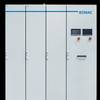The situation of the shipyards in the world and in particular the struggles of the Korean shipbuilding industry has received a fair amount of attention in the shipping press, as well as in more general news outlets. Poten and Partners discusses about the outlook for vessel deliveries in the second half in its publiation - Tanker Opinions.
In the tanker market, which, until recently, was one of the few profitable shipping segments, attention has also shifting back to the supply side of the equation.
Markets have weakened across the board and, although there is undoubtedly an element of summer slowdown at work, it appears that owners are generally more pessimistic now than they were in the beginning of the year.
Tanker owners clearly have no influence on overall oil demand growth or changes in crude oil and petroleum product trade patterns. However, at least as an industry, if not as individual companies, owners do have an impact on the supply side of the equation.
From that perspective, let’s examine the current orderbook for crude oil tankers and see if we can make any reasonable assumptions for fleet growth in 2016.
The shipbuilding industry is not short of numbers and statistics. Analysts closely follow new orders by vessel sector and by shipyard, the total orderbook (in number of vessels and as a percentage of the existing fleet) and projected delivery schedules well into the future.
Contract prices as well as newbuilding resale values are reported daily or weekly and movements in these prices are closely scrutinized to see if new trends can be determined.
However, the volume of data does not always correlate well with its accuracy. Shipbuilding orderbook and delivery data is notoriously unreliable.
Typically, the number of confirmed orders is different (mostly lower) than the initial statistics suggest. While some publicly listed owners will issue a press release detailing a new contract, most owners prefer to keep that information private.
The news may still come out via brokerage channels, other owners or through the shipyard, but the reliability of that information can easily be compromised. Options may be counted as firm orders or not reported at all and prices may not be accurate.
Delivery dates are also hard to nail down and are typically rough estimates. Once these orders are included in the orderbook as published by a handful of reputable sources, they become official and will need to be tracked.
The sheer numbers of shipyards around the world (several hundred) and vessels of all types under construction (many thousands), make this a daunting task.
As an illustration of how projections and actuals can be vastly different, we compared the projected deliveries for crude oil tankers for the second half of the year with actuals for the years 2013 to 2015.
The projected deliveries for the second half of each of the last three years were significantly higher than the actuals. In 2015, for example, less than half of the VLCCs expected to be delivered in the second half of the year actually hit the water during that period. In 2013, the situation was similar.
There are a number of reasons that actual deliveries are typically lower than projections for the year. As mentioned before, some of the orders in the orderbook may not have been real. For a number of years there were orders in the orderbook that were placed back in 2007.
In late June 2016 there was a press report that 4 Suezmaxes and 3 Aframaxes of these orders had been cancelled (in prior years, these vessels were included in the graphs).
Another reason for lower actuals than projections is that there may have been newbuilding options that were never exercised or there may have been cancellations that are not reflected because they were not reported.
Problems with financing the final delivery payment(s) could also cause orders to slip. Obviously, problems at the shipyard itself could create delays or lead to cancellations as well.
We expect that the actual crude oil (and product) tanker deliveries this year will continue to underperform against current projections and that the deliveries over the remainder of the 2016 will be less than half of the scheduled deliveries, a welcome development for tanker owners.











